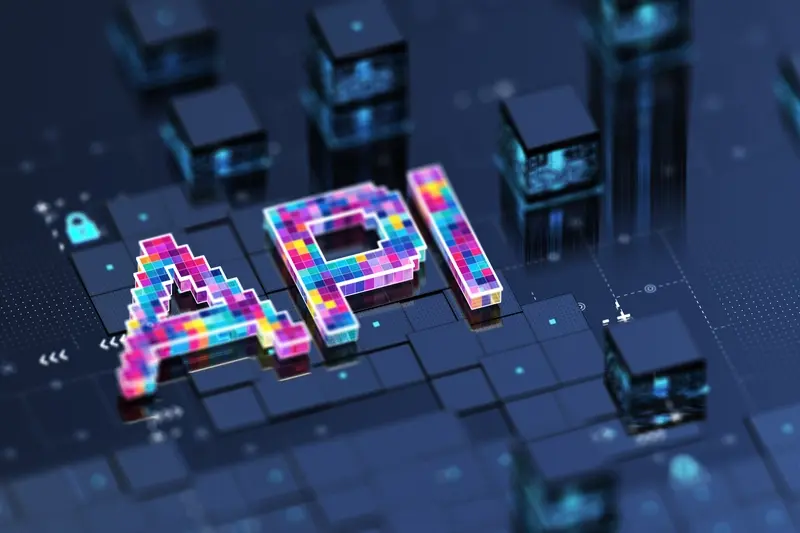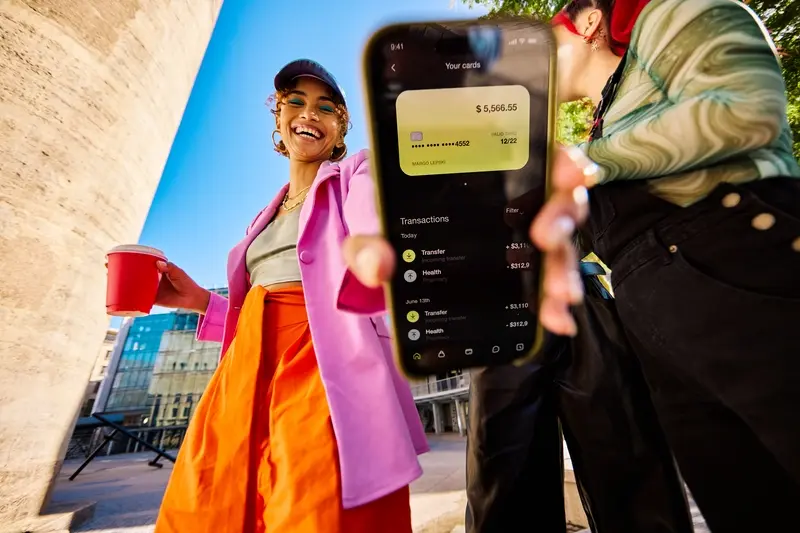What's The Difference Between Public And Private APIs For Apps?
You've got this brilliant mobile app idea that's going to change everything. The concept is solid, you've done your market research, and you're ready to start building. But then your developer starts talking about APIs and suddenly you're faced with a choice that feels way more complicated than it should be—do you go with public APIs or private APIs?
I see this confusion all the time when working with new clients. They know their app needs to connect to other services and pull in data, but the technical jargon around API types makes their heads spin. Should they use those free public APIs that everyone talks about, or invest in private APIs that cost more but offer better control? It's not just a technical decision—it affects your budget, your app's performance, and even your users' experience.
The wrong API choice can turn your dream app into a nightmare of slow loading times, security vulnerabilities, and unexpected costs that eat into your profits
That's exactly why I've put together this guide. After working on mobile app development for over eight years, I've seen what works and what doesn't when it comes to choosing between private APIs and public ones. We'll break down everything you need to know about API types for mobile apps, from the basics right through to making the right choice for your specific project.
What Are APIs And Why Do Mobile Apps Need Them
I've been working with mobile apps for over eight years now, and one question that comes up time and time again is: what exactly is an API? Don't worry—you're not alone in wondering this. An API stands for Application Programming Interface, but let's break that down into plain English.
Think of an API as a messenger that allows different software programmes to talk to each other. When you open your favourite weather app, it doesn't actually know what the weather is like outside—it asks a weather service through their API. That API fetches the information and brings it back to your app so you can see whether you need an umbrella today.
Why Mobile Apps Can't Function Without APIs
Mobile apps need APIs for several reasons. They connect your app to databases, payment systems, social media platforms, and countless other services. Without APIs, every app would need to build everything from scratch—which would be incredibly expensive and time-consuming.
APIs also keep apps lightweight and fast. Instead of storing massive amounts of data on your phone, apps can request information when they need it. This means your Instagram app doesn't need to download every photo on the platform; it just asks for the ones you want to see.
Common API Examples You Use Daily
- Social media login (signing in with Facebook or Google)
- Payment processing (Apple Pay, Google Pay, Stripe)
- Maps and location services
- Push notifications
- Cloud storage and file sharing
Understanding Public APIs—The Open Door Approach
Public APIs are exactly what they sound like—they're open for anyone to use. Think of them as services that companies offer to the world, letting developers access their features and data without needing special permission. Twitter's API lets you pull tweets into your app; Google Maps API helps you add location services; PayPal's API handles payments. These are all public APIs that millions of developers use every day.
What makes public APIs brilliant for mobile app development is their accessibility and reliability. Most come with detailed documentation, code examples, and support communities. You don't need to build everything from scratch—you can tap into existing services that are already tested and trusted by millions of users.
Always check the rate limits and pricing structure before integrating a public API. Free tiers often have usage restrictions that could affect your app's performance as it grows.
Common Public API Types for Mobile Apps
- Social media APIs (Facebook, Instagram, LinkedIn)
- Payment processing APIs (Stripe, Square, PayPal)
- Mapping and location APIs (Google Maps, Mapbox)
- Weather and data APIs (OpenWeatherMap, news feeds)
- Communication APIs (Twilio for SMS, SendGrid for email)
The downside? You're dependent on someone else's service. If they change their terms, increase prices, or experience downtime, your mobile app feels the impact immediately. But for most developers, the benefits far outweigh these risks.
Private APIs Explained—Your App's Secret Ingredient
Think of private APIs as your app's internal messaging system—they're the conversations happening behind closed doors that users never see. Unlike public APIs which are open for anyone to use, private APIs are built specifically for your app's internal operations; they handle the communication between your app's front-end and back-end systems.
I've worked on countless projects where private APIs were the backbone of the entire application. They're what make your login system work, they process payments, they sync your data across devices—all without external interference. The beauty of private APIs is that you have complete control over them.
What Makes Private APIs Special
Private APIs offer several advantages that make them indispensable for serious mobile app development:
- Complete control over functionality and performance
- Enhanced security since they're not publicly accessible
- Custom-built to match your exact business requirements
- No dependency on external services or their limitations
- Ability to modify or update without waiting for third-party approval
The downside? They require more development time and resources upfront. You can't just plug them in like public APIs—they need to be designed, built, and maintained by your development team. But for apps handling sensitive data or requiring specific functionality, private APIs are often the only sensible choice.
Key Differences Between Public And Private APIs For Mobile Development
Right, let's get straight to the point—public and private APIs serve completely different purposes in mobile app development. After years of working with both API types, I can tell you the differences go way beyond just who can access them.
Public APIs are designed for external developers to integrate with your services. Think about how Instagram lets third-party apps post photos or how Google Maps powers location features in countless mobile apps. These APIs need rock-solid documentation, consistent uptime, and they can't change suddenly without breaking thousands of apps that depend on them.
Control and Flexibility
Private APIs give you complete control over your mobile app's internal communication. You can modify them whenever you need to—no external dependencies to worry about. This means faster development cycles and the ability to optimise performance for your specific use case.
The biggest mistake I see developers make is treating private APIs like public ones—you don't need perfect documentation for internal use, but you do need clear communication within your team
Security and Access Management
Private APIs operate behind your app's security layer, which means sensitive operations like user authentication or payment processing stay protected. Public APIs require extensive security measures because they're exposed to the internet—rate limiting, API keys, and robust authentication become mandatory rather than optional.
Security Considerations When Choosing API Types For Your App
After years of building mobile apps, I can tell you that security breaches are every developer's nightmare—and they happen more often than you'd think. When you're choosing between public and private APIs for your app, security should be at the top of your priority list, not an afterthought.
Public APIs come with built-in security risks that you can't ignore. Since they're designed for widespread use, they're attractive targets for hackers. You're essentially trusting a third party to keep your users' data safe, which means you have limited control over security measures. If that API gets compromised, your app could be affected too.
Key Security Risks To Watch Out For
- Data breaches at the API provider level
- Rate limiting that could impact your app's performance
- Unauthorised access to user information
- Man-in-the-middle attacks during data transmission
- API keys being exposed in your app code
Private APIs give you much more control over security protocols. You can implement your own authentication methods, encrypt data exactly how you want, and monitor access patterns closely. The downside? You're responsible for everything—which means more work and higher costs.
My advice? If you're handling sensitive user data like payment information or personal details, lean towards private APIs. For general content or features, public APIs can work well if you implement proper security measures.
Performance And Cost Implications Of Different API Approaches
Let me be honest with you—choosing between public and private APIs isn't just about functionality; it's about your budget and how fast your mobile app needs to run. I've seen too many projects go over budget because teams didn't think through these implications early enough.
Private APIs typically cost more upfront since you're building and maintaining everything yourself. You'll need servers, databases, and ongoing maintenance costs. But here's the thing—you get complete control over performance. No rate limits imposed by third parties, no unexpected downtime from external services, and you can optimise everything for your specific mobile app needs.
Public APIs often seem cheaper at first glance. Many are free or low-cost to start with. But those costs can escalate quickly as your app grows. Rate limiting becomes a real issue; your app might slow down or stop working when you hit usage caps during peak times.
Always factor in scaling costs when comparing API options. That "free" public API might become expensive when you're processing thousands of requests daily.
Performance Comparison
- Private APIs: Faster response times, customised for your mobile app
- Public APIs: Variable performance, dependent on third-party infrastructure
- Hybrid approach: Mix both types based on specific feature requirements
The smart approach? Start with a clear understanding of your expected user base and growth projections. This helps you make informed decisions about which API types will serve your mobile app best long-term.
Choosing The Right API Strategy For Your Mobile App Project
After years of building mobile apps, I've learned that choosing between public and private APIs isn't just a technical decision—it's a business one. The strategy you pick will affect everything from your development timeline to your ongoing costs, so getting it right matters more than you might think.
Most successful apps actually use both types of APIs. They'll leverage public APIs for common functions like maps, payments, or social media integration, then build private APIs for their unique features and sensitive data. This hybrid approach gives you the best of both worlds: speed to market with proven solutions, plus complete control over your core functionality.
Questions to Ask Yourself
- What's your budget for API development and maintenance?
- How quickly do you need to launch your app?
- What level of control do you need over your data?
- Are you handling sensitive user information?
- Will you need to scale rapidly or maintain steady growth?
- Do reliable public APIs already exist for your core features?
Start with public APIs where they make sense—payment processing, mapping, authentication. Build private APIs only for features that truly differentiate your app or handle sensitive data. This approach keeps costs manageable whilst giving you the flexibility to grow and adapt as your app evolves.
When working with top app developers, they often recommend conducting thorough code reviews for both API types to ensure quality and security standards are met.
Remember that customer engagement and customer service will be heavily influenced by your API choices, as they directly impact app performance and user experience.
If you're just starting out and need guidance on turning your app idea into reality, consider how API decisions fit into your broader development strategy.
Conclusion
After working with countless mobile app projects over the years, I can tell you that getting your API strategy right from the start will save you headaches down the road. Whether you choose public APIs, private APIs, or a mix of both depends entirely on what your app needs to do and how you want it to work.
Public APIs are brilliant for getting started quickly—they give you access to loads of features without having to build everything yourself. Private APIs give you complete control and keep your data secure, but they require more work upfront. Most successful apps I've worked on use both types; public APIs for things like maps and payments, private APIs for their core business logic.
The key is thinking about your users first. What do they need your app to do? How sensitive is their data? How fast does everything need to work? Once you know that, the choice between API types becomes much clearer. Don't get caught up in what's trendy or what other apps are doing—focus on what makes sense for your specific project and budget.
Remember, you can always start with one approach and change later as your app grows. The important thing is making an informed decision that sets your mobile app up for success.
Share this
Subscribe To Our Learning Centre
You May Also Like
These Related Guides

What Is An API And Why Does My Mobile App Need One?

How Do You Integrate With Banking APIs and Systems?



